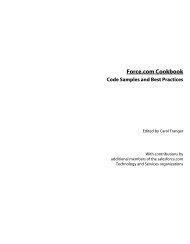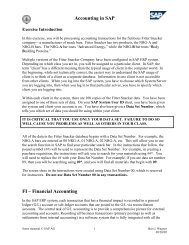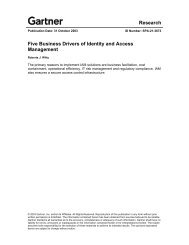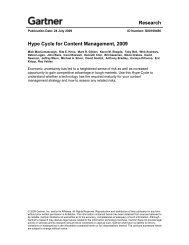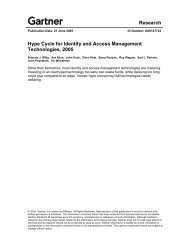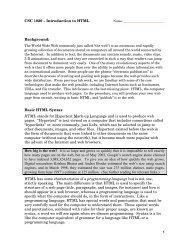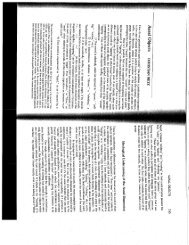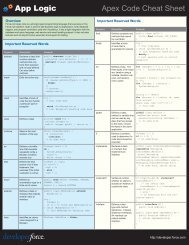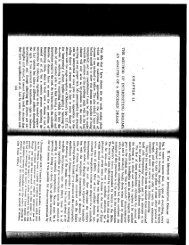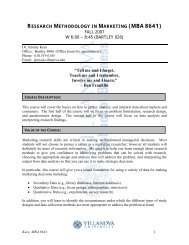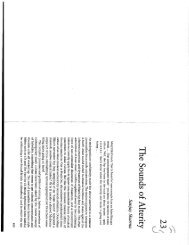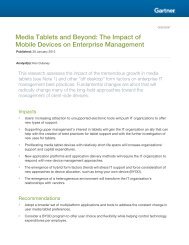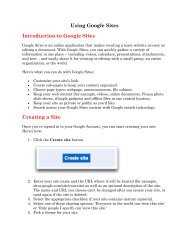Content Management Framework
Content Management Framework
Content Management Framework
Create successful ePaper yourself
Turn your PDF publications into a flip-book with our unique Google optimized e-Paper software.
<strong>Framework</strong> • 3<br />
publication. The output of an EDMS is essentially<br />
electronic renditions of physical documents (such as<br />
Microsoft Office application files, .PDF files, and<br />
Web pages) with static images and graphics.<br />
DIGITAL ASSET MANAGEMENT. Organizations<br />
that already work extensively with multimedia content<br />
(such as images, sounds, animation, and fullmotion<br />
video) have often implemented digital asset<br />
management systems (DAMSs). Beyond simply ingesting,<br />
digesting, and distributing alternative multimedia<br />
file types (and, in so doing, managing very<br />
large repositories as well as multiple media-editing<br />
tools), a DAMS provides the capabilities for searching<br />
through a multimedia collection, finding individual<br />
assets, maintaining copyright protections, and<br />
delivering them to output devices.<br />
XML PUBLISHING. Organizations are also facing<br />
an additional challenge: the need to embed structure<br />
into their content management environments by using<br />
XML-tagged documents. XML allows companies<br />
to decompose their content into globally identifiable<br />
semi-structured “chunks,” or content components.<br />
These components, in turn, can be dynamically<br />
assembled for multiple purposes, such as tailored<br />
collections based on predetermined profiles or<br />
context-specific criteria. In addition, organizations<br />
can organize collections of XML tag sets into metadata<br />
schemas, from which end users and applications<br />
can infer relationships among multiple entities. As a<br />
result, companies can begin to link ad hoc content<br />
components to specific business processes and to<br />
transactional systems.<br />
Companies that produce product catalogs—both<br />
online and in print—are currently migrating toward<br />
XML publishing. So, too, are manufacturers who<br />
supply technical documentation, product descriptions,<br />
and customer decision-making parameters to<br />
the distributors and retailers who sell the supplier’s<br />
products. This widespread migration to XML publishing<br />
on the part of virtually every company that<br />
produces or sells products is one of the key drivers<br />
for the investments being made in content management<br />
solutions today.<br />
AN EVALUATION FRAMEWORK<br />
Six Key Criteria<br />
An enterprise content management system blends<br />
the critical capabilities of a WCMS, EDMS, and<br />
DAMS; organizes them into an integrated platform;<br />
and exploits the embedded capabilities of XML tag<br />
sets and related metadata schemas. In order to best<br />
understand the strengths and weaknesses of individual<br />
vendors’ product offerings, we have developed<br />
an enterprise content management (ECM) framework.<br />
As shown in Illustration 2, this framework<br />
focuses on the following six key criteria:<br />
• <strong>Content</strong> <strong>Management</strong> Lifecycle. The content<br />
management lifecycle describes the flow of content<br />
through four distinct stages: create, compose/stage,<br />
produce/deliver, and age/archive.<br />
• Granularity. Granularity specifies the content<br />
components—ranging from entire documents to<br />
discrete chunks—that a content management<br />
system manages.<br />
• Metadata <strong>Management</strong>. Metadata management<br />
determines the ways in which a content management<br />
system categorizes content according to<br />
predefined attributes and/or taxonomies.<br />
• Application Integration. Application integration<br />
identifies the tools and techniques for integrating<br />
content management capabilities with related<br />
enterprise applications.<br />
• Administration. Administration defines the system<br />
management capabilities for managing the<br />
content management server, particularly within<br />
the context of an overall enterprise environment.<br />
• Globalization. Globalization identifies how an<br />
enterprise content management system adapts to<br />
different cultural and social situations. Globalization<br />
ensures that organizations operating in<br />
multilingual/multicultural environments have the<br />
resources for managing content in several natural<br />
languages and can distribute content according<br />
to culturally specific criteria.<br />
© 2004 Patricia Seybold Group • Unauthorized redistribution of this report is a violation of copyright law. A Customers.com ® Research Service



